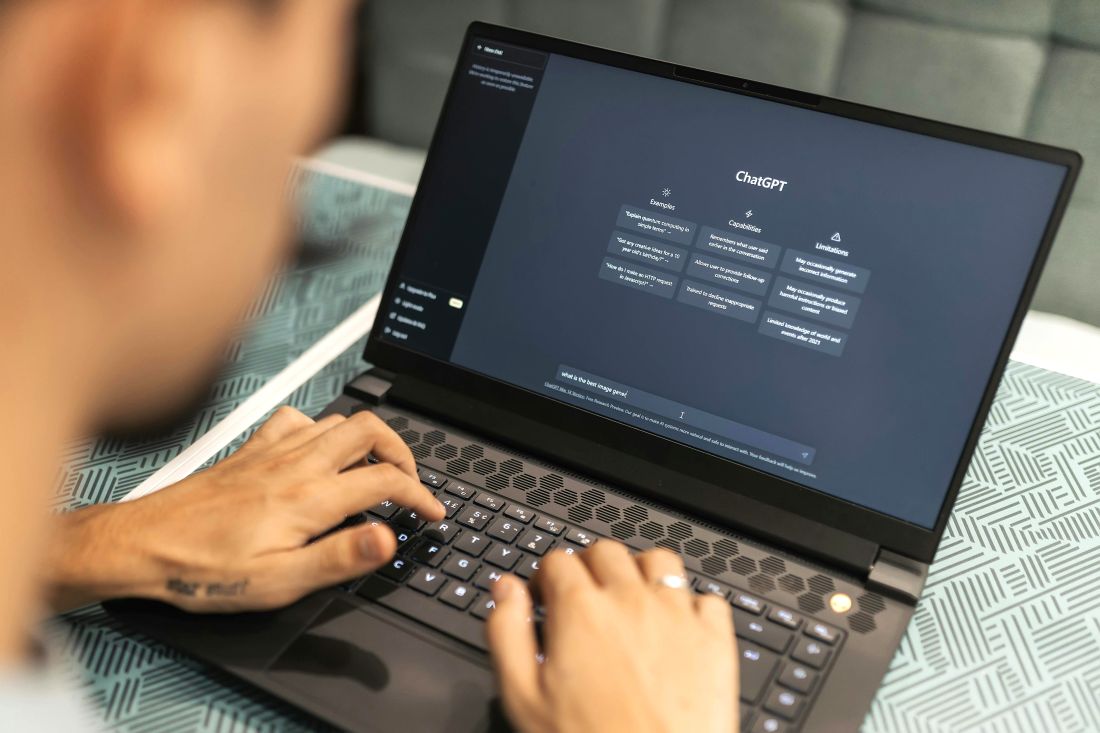Enhancing the security of an office building is crucial for protecting employees, assets, and sensitive information. To develop a comprehensive strategy, companies must implement various measures to deter potential threats and respond quickly to incidents.
Whilst serviced offices care for all aspects of a business centre, companies in leased spaces or “traditional offices” will have a bigger responsibility to think about security.
We have compiled a list of 11 steps UK businesses can take to enhance security in their office buildings.
1. Improve Physical Barriers
Physical barriers are the first defence against unauthorised access and potential security breaches. Reinforcing these barriers can significantly deter intruders. Consider the following:
• Fencing and Gates: Surround the premises with secure fencing and controlled-access gates. This will limit unauthorised entry and direct visitors to designated entrances. In an office building with many tenants, this could include installing a gated entry that can only be accessed by staff and visitors.

• Doors and Windows: Ensure all doors and windows are durable. Installing shatter-resistant glass in reception areas and reinforcing door frames will further prevent forced entry.
• Bollards and Barriers: Placing bollards or barriers near main entrances and loading docks can help prevent accidental collisions or vehicle-based attacks.
2. Electronic Entry Systems
Effective access control systems are key to regulating who can enter, thus improving the security of the building. Controlling access can be done in several ways.
• Electronic Building Entry: By implementing keycard or biometric systems, only authorised personnel can enter the building. Biometric systems reduce the risk of lost keys in the wrong hands.
• Scheduled Access: Set access permissions based on working hours. For office buildings, this could mean that cleaners only have access after-hours, while staff have access until 5 or 6 p.m.
• Intercom Systems: Installing intercom systems at entrances allows reception staff to verify visitors' identities before granting access, providing additional security for the building.
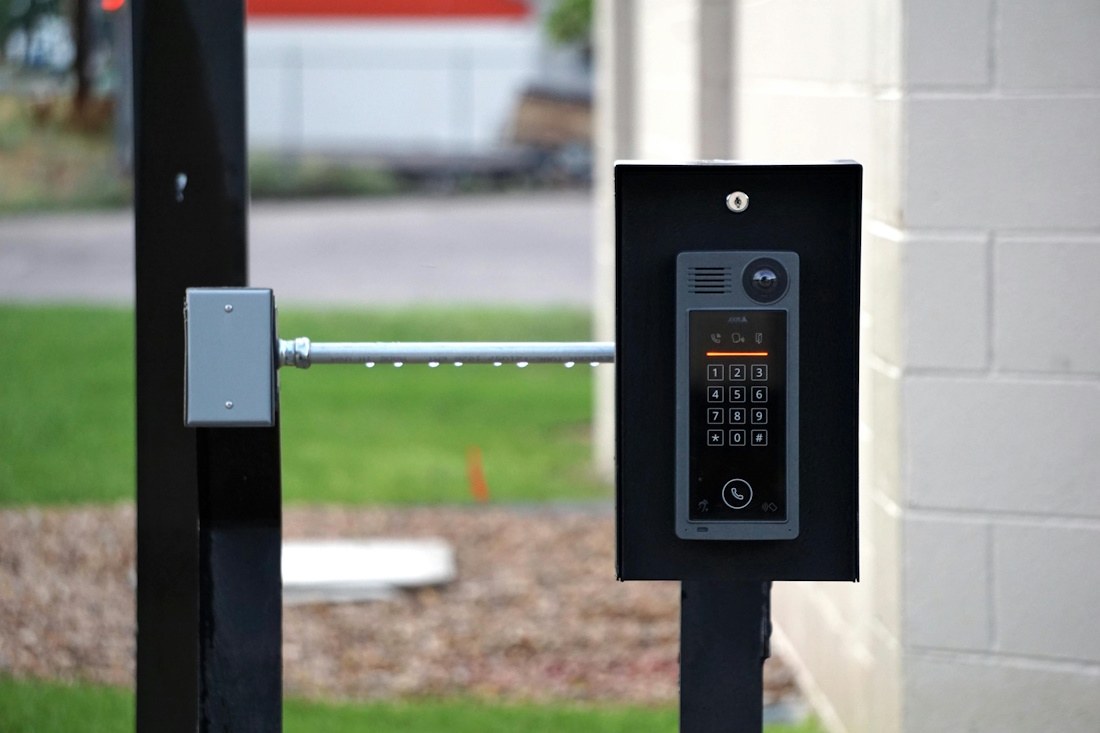
3. Employ Security Guards
Onsite security guards provide a human element to your security strategy. It is also helpful to have trained personnel who can respond immediately to situations that may occur. Some of the benefits are:
• Visible Deterrent: Security guards can provide staff and visitors peace of mind and discourage potential intruders.
• Emergency Response: Guards are often trained to manage emergencies and coordinate evacuations. They can ensure that all companies in an office building report to the correct designated assembly point.
• Patrols and Monitoring: Dedicated guards can monitor surveillance systems, conduct patrols and respond quickly. In an office building, patrols are useful for checking unlocked doors, windows, or unoccupied offices.
4. CCTV Surveillance
In security breaches, surveillance systems can help monitor activities and gather evidence. Modern surveillance methods can include:
• High-Definition Cameras: HD cameras are vital for improving security and identifying potential intruders. Installing cameras at all entrances, exits, corridors, and stairwells will provide comprehensive coverage.
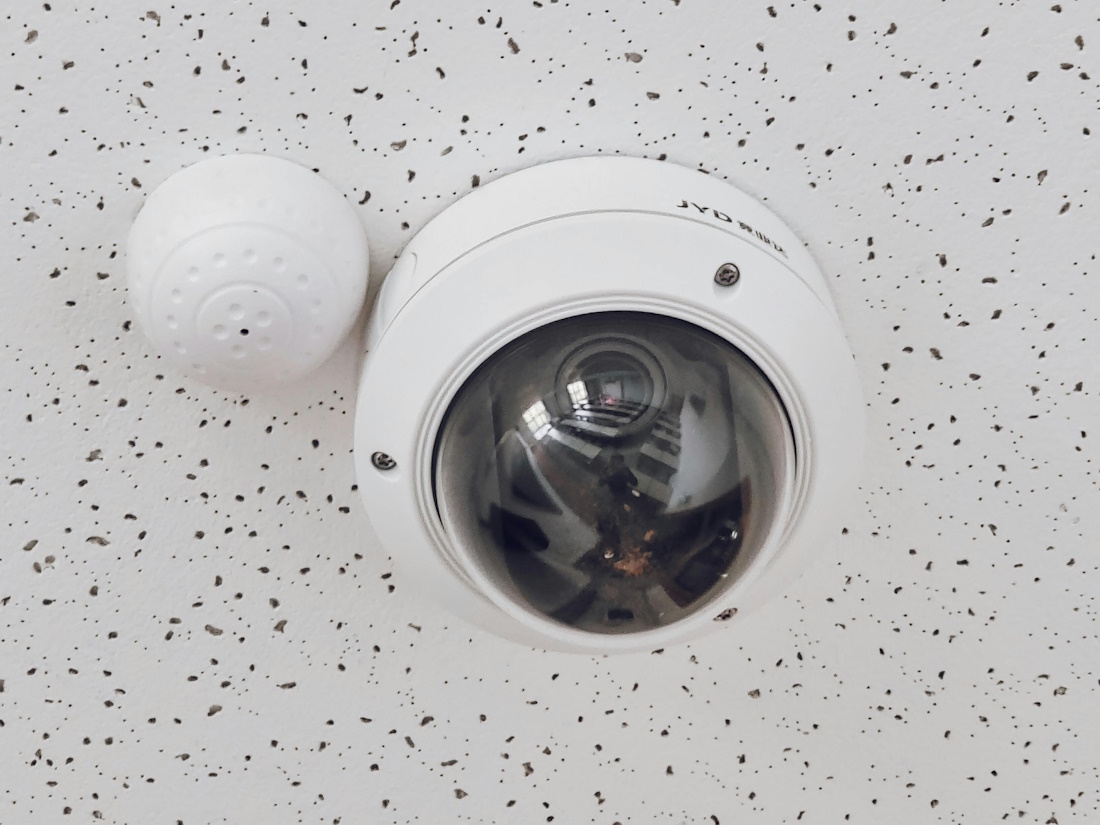
• Remote Monitoring: Remote access to surveillance feeds allows security personnel to monitor the building from any location.
Ensure that all recorded footage is securely stored and can be accessed when necessary. It is also important to make sure the video storage complies with data protection regulations.
5. Security Lighting & Alarms
Proper lighting can serve as a deterrent, whilst alarms provide immediate alerts during a security breach.
• Interior and Exterior Lighting: Adequate lighting in corridors and stairways can improve safety by reducing hiding spots. Motion-activated lighting outside the building can deter intruders and increase visibility at night, especially in car parks. This will improve the safety of employees leaving the office late.

• Intruder and Fire Alarms: Intruder alarms can detect unauthorised entry and alert security or the police. By law, fire alarms should also be regularly maintained and will enable a swift emergency response.
6. Enhance Cybersecurity
With the increase in hybrid working, cybersecurity is more important than ever. Security should incorporate digital assets as well as physical ones. This can be done through:
• Virus Protection: Ensure you implement antivirus software and firewalls to protect against cyber-attacks.
• Install Regular Updates: It is important to regularly update your cybersecurity systems and software to maintain your network's security.
• Data Encryption: Sensitive data should always be encrypted to provide unauthorised access. Make sure all client data and internal documents are encrypted before being stored on servers or shared via email.
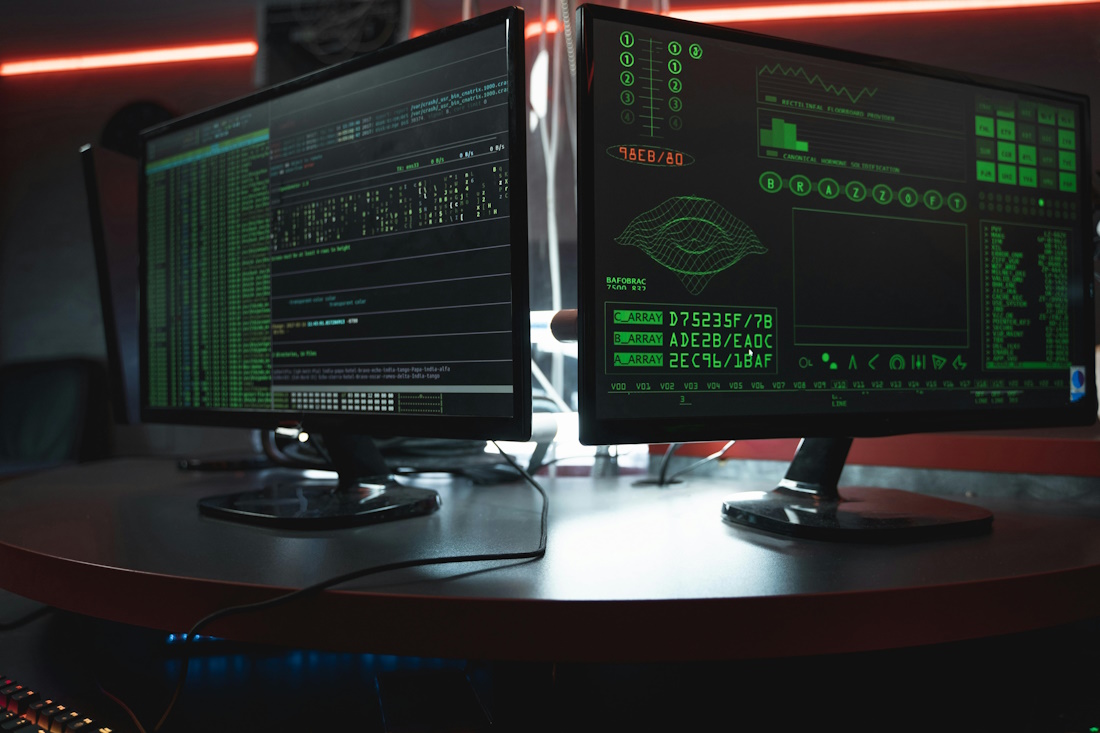
• Strong Password Policies: Enforce the use of complex passwords. Install multi-factor authentication for all accounts to add further security.
7. Secure Document Handling
Managing digital and physical documents will prevent sensitive information from being accessed by the wrong people. There are many ways to handle documents securely.
• Document Storage: A key stage of document handling is where you store documents. Paper copies should be kept in locked cabinets, whilst digital copies should be password protected. “Clear desk policies” require all physical documents to be put away, protecting sensitive information.
• Secure Disposal: Disposal is just as important as storage. Removing documents should include shredding paper files and properly erasing digital data.

• Document Tracking: Logs for sensitive documents can monitor usage and control access.
8. Visitor Management
Managing visitors ensures that only authorised individuals have access to the building. Some effective ways of visitor management include:
• Implementing a Registration Process: All visitors should sign in and provide identification upon arrival. You can further secure the building by offering an online pre-registration system to streamline check-ins.

• Visitor Passes: Issuing temporary visitor passes ensures that visitors are easily identifiable and limits unauthorised access to restricted areas. For instance, a visitor keycard system may grant access to meeting rooms only while limiting access to private offices.
• Chaperones: This would ensure visitors are not left unaccompanied in the building.
9. Implement/Update Policies & Procedures
Clear and detailed policies will provide employees with guidelines to maintain the security of the building.
• Written Policies: These should be detailed and include security protocols, reporting procedures, and employee responsibilities. They should also be easily accessible at any time and in a range of formats, such as braille or large text.
• Incident Response Plans: Create a plan with detailed steps for various emergencies, including recovery procedures. For companies handling sensitive data, this plan could outline the steps for responding to a data breach.
• Regular Reviews: The policies should be regularly updated to adapt to new threats or organisational changes. For example, reviewing access control policies after an office relocation or business expansion.
10. Provide Employee Training
Employees are another key part of enhancing security in an office building. They should be trained to be vigilant and work as a team.
Conduct training sessions that cover topics such as recognising suspicious activity, secure document handling, and best practices for cybersecurity. If you have dedicated security personnel, ensure employees know what to report and to whom.
Raise awareness of these training programs using posters, online newsletters and meetings to reinforce the importance of security.
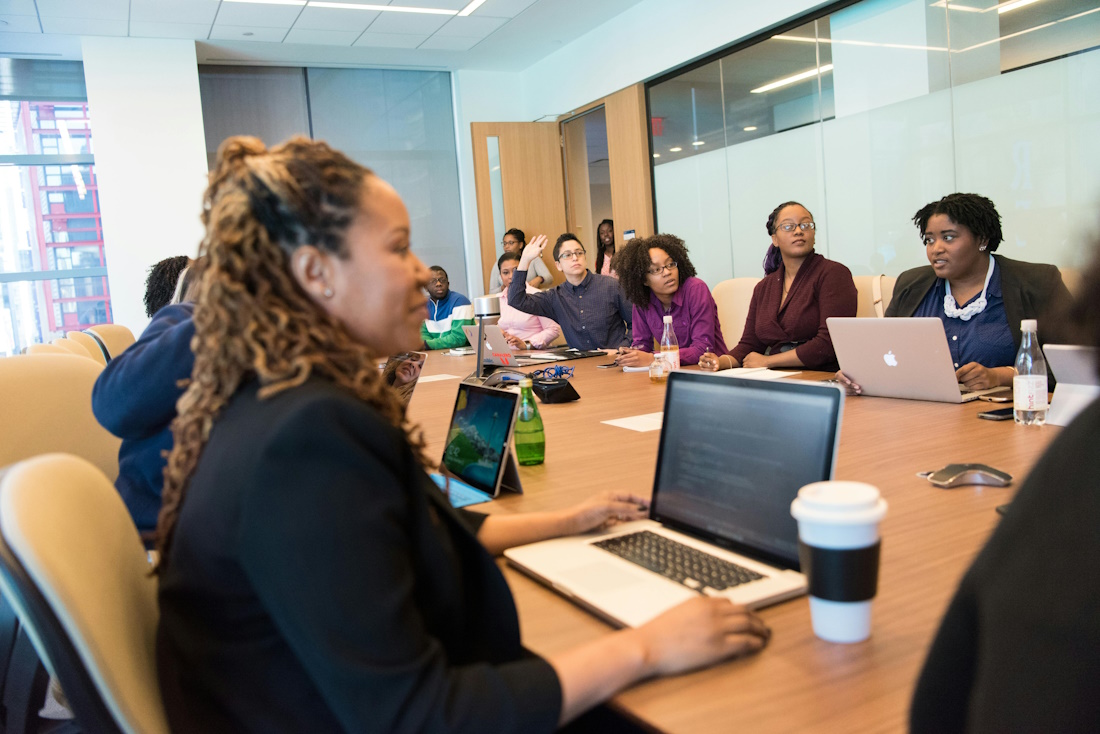
11. Plan for Emergencies
Having plans in place for emergencies is essential in the case of a security breach. Here are a few measures to improve emergency preparedness:
• Safe Rooms: Set up ‘safe rooms’ where employees can stay protected and safe during an emergency or active threat.
• Panic Buttons: Installing panic buttons at strategic points throughout the building can help employees quickly alert security or emergency services.
• Emergency Communication Systems: A mass notification system, such as text message or email, is a great way to provide fast and clear instructions to all employees at once.
Businesses must take a multifaceted approach to enhance the security of an office building. This includes a mix of physical measures, technology, and vigilance. It is also important to regularly review and maintain policies and procedures to maintain a secure working environment.







